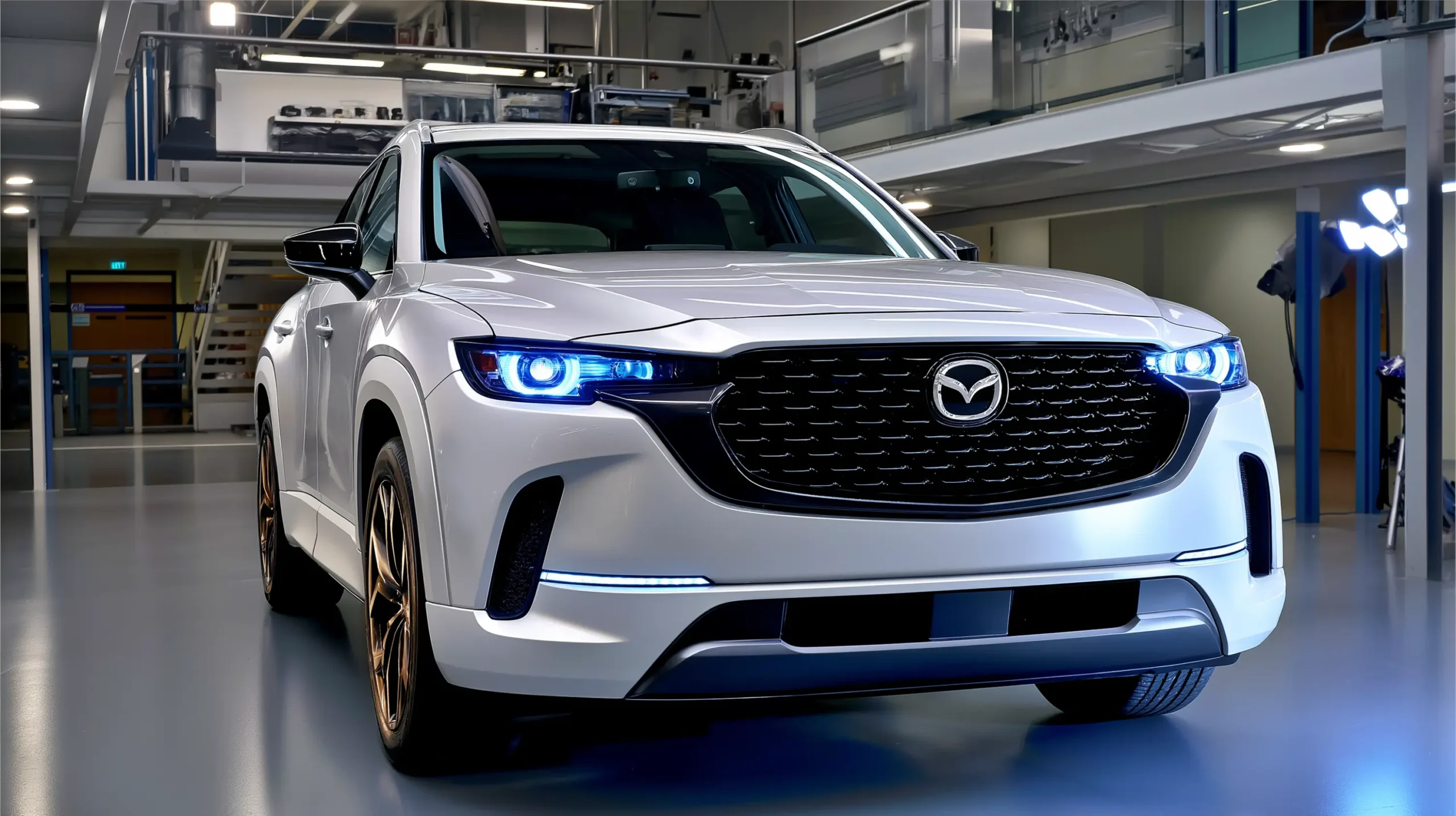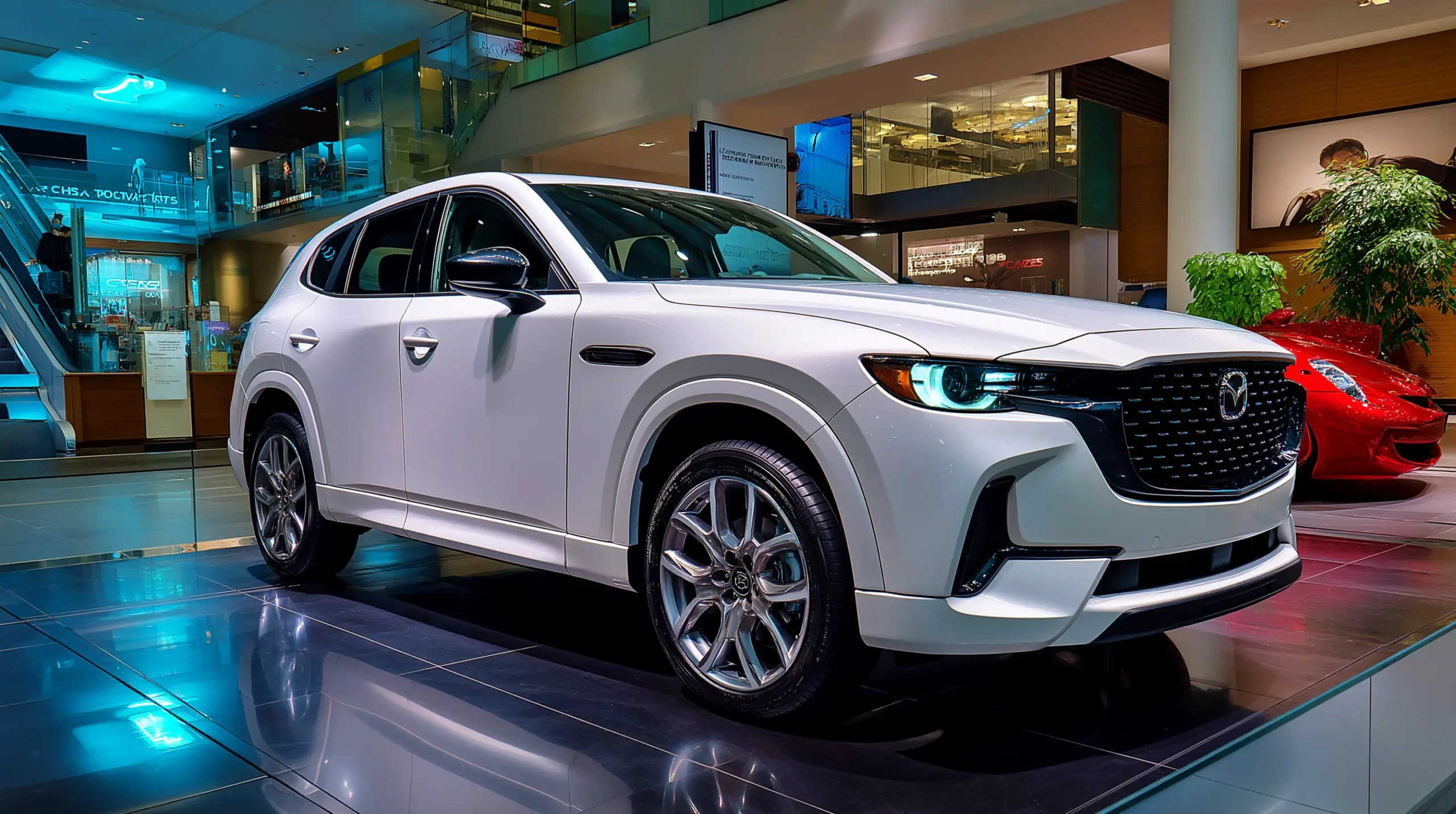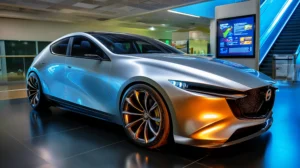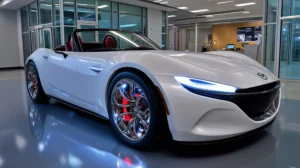2026 Mazda CX-50
Mazda’s CX-50 carved a unique niche when it rolled onto the scene for the 2023 model year.
Slotting alongside the ever-popular CX-5, the CX-50 aimed for a slightly different adventurer who appreciates Mazda’s signature on-road elegance and driving verve but also seeks a more rugged aesthetic and capability for weekend escapes beyond the pavement.

Built in the USA and sharing showroom space with its established sibling, the CX-50 quickly impressed with its premium cabin, standard all-wheel drive, and engaging dynamics.
Now, as we look towards the 2026 model year, anticipation builds. While Mazda hasn’t yet unfurled the official banner detailing every change (as of April 2025), the automotive world operates on cycles.
Given the CX-50’s relative youth, we don’t expect a ground-up overhaul. Instead, think refinement. The 2026 Mazda CX-50 is poised to build upon the strong foundation of the 2025 model, potentially incorporating subtle enhancements that keep it sharp in the fiercely competitive compact crossover arena.
What Might Be New for 2026? Sharpening the Edges
Mid-cycle refreshes are common around the three-to-four-year mark, making 2026 a plausible window for the CX-50 to receive some nips and tucks.
What could this entail? Expect potential, albeit likely subtle, updates to the exterior styling. Perhaps revising the front and rear fascias, tweaking LED lighting signatures that refine Mazda’s Kodo design language, or creating new alloy wheel designs to freshen the look.
Inside, the already impressive cabin might see minor material upgrades or adjustments to trim package content.
Technologically, while the current infotainment system (centered around a 10.3-inch display controlled primarily via a rotary knob) is functional, software updates enhancing responsiveness or feature integration are always possible.
We might also see certain features previously reserved for top trims trickle down to mid-range offerings.
However, it’s crucial to distinguish these potential CX-50 updates from the more significant redesign anticipated for its sibling, the 2026 Mazda CX-5, which is expected to debut an all-new, in-house hybrid system.
The 2026 CX-50 will likely carry forward its existing powertrain lineup, including its recently introduced hybrid variant.
The Heart of the Matter: Powertrains Likely to Carry Over
Mazda’s philosophy often prioritizes the driving experience over chasing headline horsepower figures, and the CX-50 exemplifies this. We fully expect the 2026 model to retain the tiered engine strategy:
- Skyactiv-G 2.5L: The naturally aspirated 2.5-liter four-cylinder serves as the entry point. Producing a respectable 187 horsepower and 185 lb-ft of torque delivers adequate motivation for daily driving, paired with Mazda’s smooth-shifting (and increasingly rare in the segment) six-speed automatic transmission.
- Skyactiv-G 2.5L Turbo: The turbocharged 2.5-liter engine transforms the CX-50’s character for those craving more zest. Pumping up to 256 horsepower and a robust 320 lb-ft of torque (using premium 93 octane fuel; slightly less on regular), this engine provides effortless acceleration and a genuinely sporty feel, again mated to the six-speed auto.
- The Hybrid Option: Introduced for 2025, the CX-50 Hybrid will almost certainly continue. Borrowing its efficient powertrain from Toyota (a result of a partnership between the automakers), it combines a 2.5-liter Atkinson-cycle four-cylinder engine with electric motors for a total system output of 219 horsepower. Power is managed by an electronically controlled continuously variable transmission (e-CVT) and distributed via a standard electronic all-wheel-drive (e-AWD) system.
Crucially, Mazda’s i-Activ All-Wheel Drive remains standard across the board (including the electronic version on the Hybrid), providing confidence in slippery conditions.
Mazda Intelligent Drive Select (Mi-Drive) with Sport and Off-Road modes (plus an available Towing mode on Turbo models) allows drivers to tailor the vehicle’s dynamics to the terrain.
The Mazda Magic: How It Drives
Talk to any Mazda enthusiast, and they’ll likely mention how the cars feel. The CX-50 is no exception. Despite its slightly more rugged positioning than the CX-5, it retains that inherent Mazda DNA.
The steering is precise and communicative, providing reassuring feedback. The chassis feels taut and composed, gracefully managing corners rather than lumbering through them like some competitors.
Mazda’s G-Vectoring Control Plus subtly adjusts engine torque and braking to enhance steering response and stability, contributing to a connected, confidence-inspiring drive.
While the standard six-speed automatic in the non-hybrid models offers crisp, predictable shifts, the Hybrid’s e-CVT aims to mimic that feel, tuned for responsiveness.
While CVTs aren’t always enthusiast favorites, Mazda and Toyota have worked to minimize the “rubber-band” effect often associated with them.
The Hybrid’s added weight might feel slightly less agile than its turbocharged sibling, but the trade-off is significant fuel savings.

A Cabin Above: Craftsmanship and Tech
Step inside the CX-50, and it’s immediately clear Mazda aims for a near-premium experience. Material quality often punches above price points, with thoughtful design touches and excellent fit-and-finish. The driver-centric cockpit layout is intuitive, placing controls within easy reach.
The centerpiece is the 10.3-inch infotainment display, elegantly integrated into the dash. While primarily operated by a console-mounted commander knob (promoting less distraction), wireless Apple CarPlay and Android Auto integration are standard, likely offering some touch functionality within those interfaces.
Available niceties include a panoramic moonroof, a rich-sounding 12-speaker Bose® audio system, supple leather upholstery (including fetching Terracotta options), heated and ventilated front seats, a heated steering wheel, and wireless phone charging.
Passenger space is competitive for the compact class, though the Hybrid model sacrifices a small amount of rear seat and cargo room due to battery placement.
Cargo volume behind the rear seats is a useful 31.4 cubic feet (slightly less in the Hybrid), expanding to 56.3 cubic feet with the seats folded – practical, some rivals like the Honda CR-V offer more outright volume.
Rugged Looks, Real Capability?
With its wider stance, black fender cladding, and available accessories like roof platforms, the CX-50 certainly looks the part.
Standard AWD and 8.3 inches of ground clearance (8.6 inches on Turbo trims) give it genuine capability for tackling snowy roads or unpaved trails leading to a campsite or trailhead.
The Off-Road Mi-Drive mode optimizes the AWD and traction control systems for loose surfaces. While it’s not designed for serious rock-crawling (like a Jeep Wrangler or Ford Bronco), it offers more confidence off the beaten path than many purely road-focused crossovers.
Towing capacity is respectable at 2,000 lbs for the base engine and Hybrid, rising to a useful 3,500 lbs for the Turbo models.
Fuel Efficiency: The Hybrid Advantage
Fuel economy will likely mirror the 2025 figures:
- 2.5L Non-Turbo: Around 24 mpg city / 30 mpg highway / 27 mpg combined.
- 2.5L Turbo: Around 23 mpg city / 29 mpg highway / 25 mpg combined.
- 2.5L Hybrid: Expected around 37 mpg city / 34 mpg highway / 36 mpg combined (official EPA figures may vary slightly by source/trim).
The Hybrid offers a substantial efficiency benefit, making it compelling for high-mileage drivers.

Safety First: i-Activsense Suite
Mazda equips its vehicles generously with safety features, and the CX-50 is no different. The standard i-Activsense suite includes essentials like:
- Automated Emergency Braking with Pedestrian Detection
- Blind Spot Monitoring
- Rear Cross-Traffic Alert
- Lane Departure Warning System
- Lane-Keep Assist
- Mazda Radar Cruise Control with Stop & Go
- Driver Attention Alert
- High Beam Control
Available upgrades often include Traffic Sign Recognition, an Adaptive Front-lighting System, and a 360° View Monitor. Expect the 2026 model to maintain high safety standards and strong crash-test ratings.
Pricing and Trims (Estimated for 2026)
Assuming minor inflationary adjustments and potential feature shuffling, the 2026 Mazda CX-50 lineup could look something like this (based on 2025 estimates):
- 2.5 S Trims (Select, Preferred, Premium, Premium Plus): Starting likely around $31,500 – $39,000
- 2.5 Turbo Trims (Base Turbo, Meridian, Premium, Premium Plus): Starting likely around $39,500 – $45,000
- 2.5 Hybrid Trims (Select, Premium, Premium Plus): Starting likely around $35,500 – $42,000
These are projections, and official pricing will be confirmed closer to launch.
Standing Out in a Crowd
The CX-50 competes against heavy hitters: Toyota RAV4, Honda CR-V, Subaru Forester/Outback, Kia Sportage, Hyundai Tucson, Ford Escape, Nissan Rogue, and VW Tiguan.
Its key differentiators remain its sharp handling, upscale interior ambiance, standard AWD (optional on many rivals), and unique, rugged-yet-refined styling.
The addition of the efficient Hybrid addresses a previous gap in its lineup, directly challenging hybrid versions of the RAV4, CR-V, Sportage, and Tucson.
While it might not offer the absolute most significant cargo hold or the lowest starting price, it delivers a compelling blend of style, driving enjoyment, and perceived quality.
The Anticipation Builds
The 2026 Mazda CX-50 isn’t expected to reinvent the wheel, but rather polish an already compelling package.
It will likely continue to appeal to drivers who want more than just A-to-B transportation; those who appreciate design, enjoy the act of driving, and desire a cabin that feels a cut above the mainstream without stepping fully into luxury brand territory.
With its blend of available turbocharged power, impressive hybrid efficiency, standard AWD, and rugged good looks, the CX-50 formula is potent. We eagerly await official details, but expect the 2026 model to remain a standout choice for the discerning crossover buyer.



